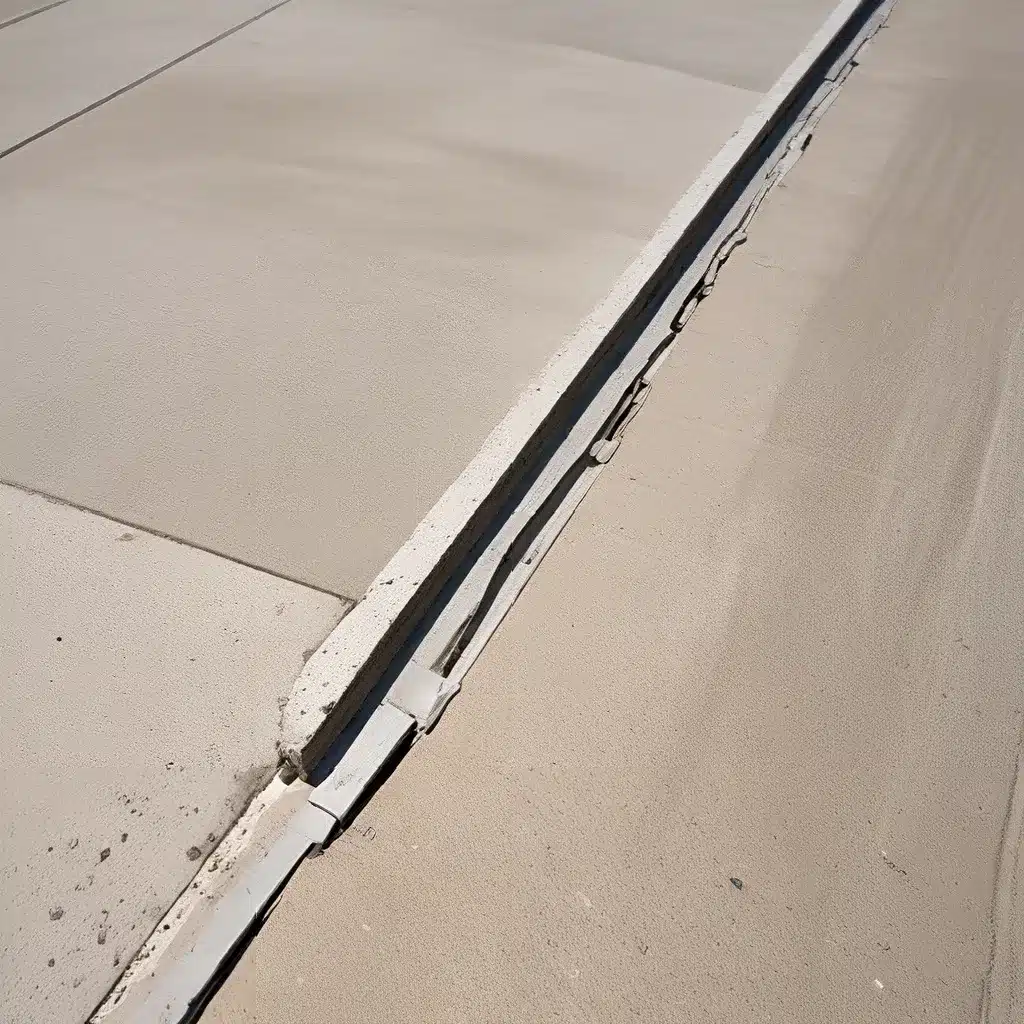
Ahh, the joys of owning a concrete surface – the sleek, polished look, the durability, the endless possibilities. But, let me guess, you’ve probably encountered those dreaded cracks that seem to appear out of nowhere, ruining the flawless finish you once admired. Well, my friend, fear not! I’m here to let you in on a little secret that could save your concrete surfaces from the scourge of cracks: expansion joints.
Unraveling the Mystery of Expansion Joints
You know, concrete is a pretty remarkable material. It can withstand the weight of entire buildings, the pounding of heavy machinery, and the relentless march of time. But, despite its impressive strength, concrete is not immune to the forces of nature. As temperatures rise and fall, the concrete expands and contracts, and without a way to accommodate this movement, it will inevitably crack, leaving your once-pristine surfaces looking more like a jigsaw puzzle than a cohesive whole.
That’s where expansion joints come in – they’re the unsung heroes of the concrete world, silently working to prevent those unsightly cracks from ruining your day. These deliberate breaks in the concrete slab or structure allow the material to expand and contract without putting undue stress on the surrounding areas. It’s like having a safety valve for your concrete, ensuring that the internal stresses don’t build up to the point of a catastrophic blowout.
The Goldilocks of Concrete Slabs
But how do you know when to put in those all-important expansion joints? Well, it’s all about finding that perfect balance. You see, the maximum size of a concrete slab without expansion joints can vary depending on a whole host of factors, like the concrete mixture, the reinforcement, and the environmental conditions. Generally, experts recommend adding expansion joints every 20 to 30 feet in residential concrete slabs. For larger commercial or industrial slabs, the intervals may need to be even closer.
Now, I know what you’re thinking – “But what if my concrete slab is already laid, and I’m starting to see those pesky cracks appear?” Well, my friend, I’ve got some bad news for you. Trying to add expansion joints after the fact is a bit like trying to perform open-heart surgery on a concrete Frankenstein – it’s just not going to end well. The expansion joints need to be planned and installed during the initial concrete pouring process to be truly effective.
The Importance of Proper Installation
But, don’t worry, it’s not all doom and gloom. If you suspect your existing concrete is lacking in the expansion joint department, there are still some options available to you. The best thing to do is to consult with a professional concrete repair company like Concrete Solutions Townsville. They’ll be able to assess the situation, identify any problem areas, and recommend the appropriate remediation solutions.
And let me tell you, when it comes to expansion joints, proper installation is key. You can’t just slap them in there willy-nilly and expect them to work their magic. No, no, no – these babies need to be carefully planned and executed with the precision of a surgeon performing a delicate operation. Improper installation can actually weaken the concrete structure and may not provide the desired relief from expansion and contraction stresses.
Sealing the Deal with Expansion Joint Sealants
But even if your expansion joints are installed to perfection, there’s still one more piece of the puzzle to consider: the sealant. You see, those expansion joints aren’t just there for show – they need to be properly sealed to prevent water and other nasties from seeping in and causing even more damage.
Now, I know what you’re thinking – “Sealant? How hard can that be?” Well, my friend, let me tell you, it’s not as simple as just slapping on any old sealant and calling it a day. You need to use a high-quality, flexible sealant that’s specifically designed for expansion joints, following the manufacturer’s instructions to the letter. Get it wrong, and you could end up with a leaky, crumbling mess that’s even worse than the original problem.
Keeping Your Concrete Surfaces Pristine
At the end of the day, maintaining your concrete surfaces is all about balance – balancing the expansion and contraction, balancing the need for expansion joints, and balancing the right sealant for the job. It’s a delicate dance, but one that’s well worth the effort if you want to keep your concrete looking its best for years to come.
So, the next time you’re admiring the sleek, polished finish of your concrete surfaces, take a moment to appreciate the unsung heroes that are keeping those cracks at bay – the humble expansion joints. And remember, if you ever find yourself facing a concrete crisis, don’t hesitate to reach out to the experts at Concrete Solutions Townsville – they’re the crack(ing) team you need to keep your surfaces seamless and crack-free.
Additional Resources
For more information on concrete expansion joints and crack repair, be sure to check out these helpful resources:
Tennis Court Crack Repair Guide
Expansion Joint Sealant Services
No Control Joints in Concrete

